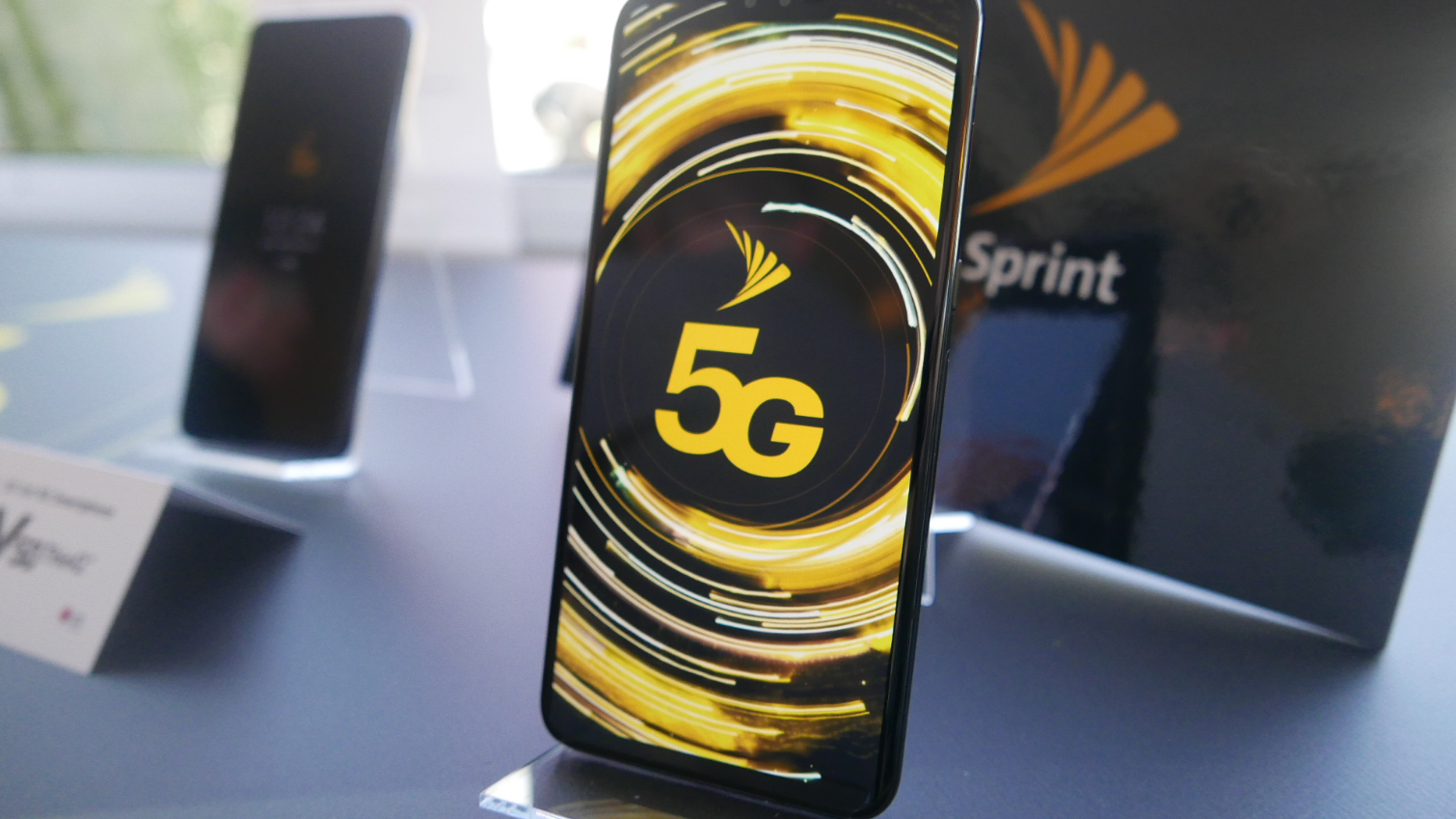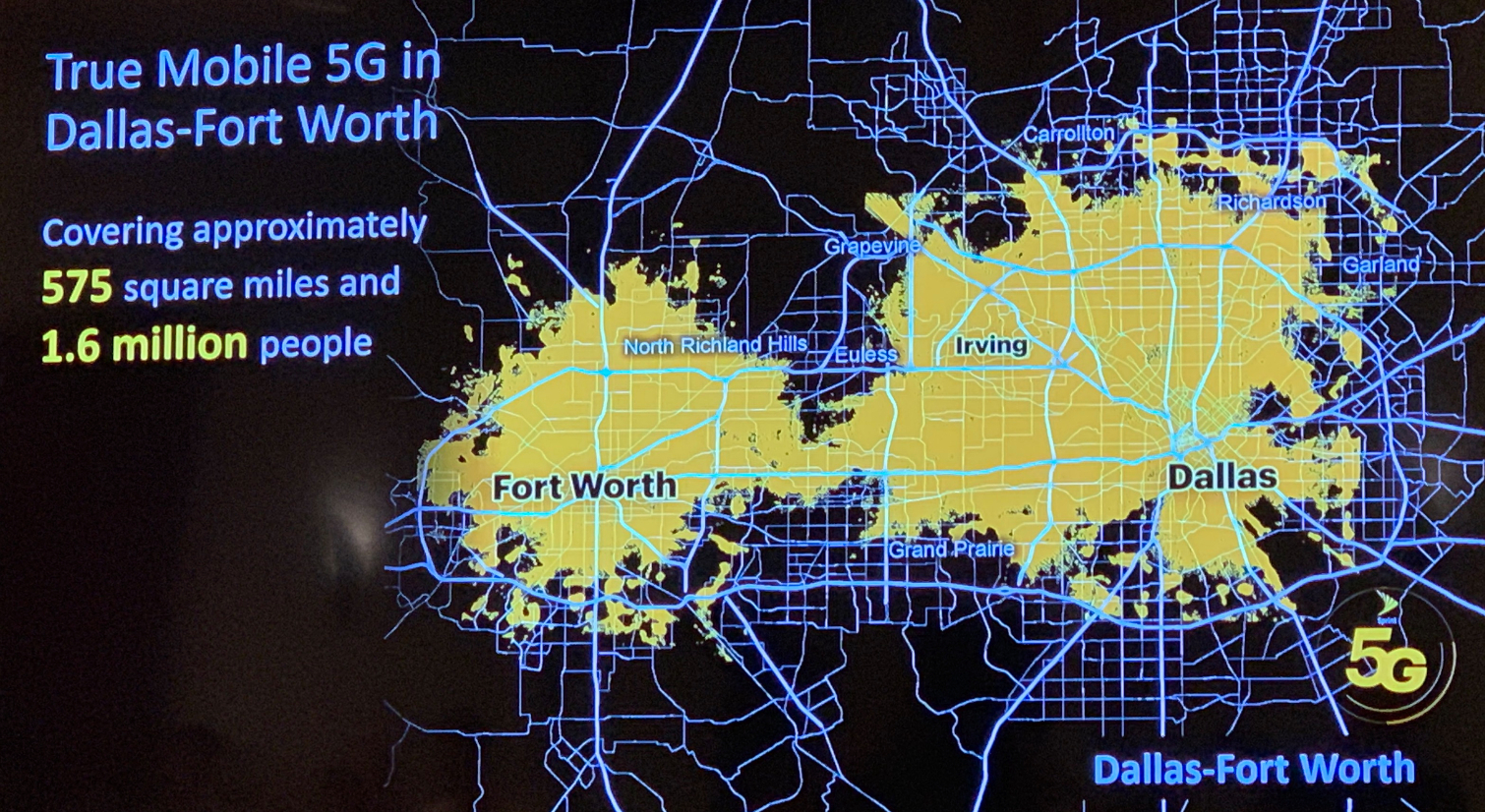Sprint Lights Up 5G Network: What You Need to Know
Sprint just launched its 5G network in five cities and two 5G devices are going on sale. Here are all the details.
Update 1:58 pm ET: We've posted the first Sprint 5G speed test results, and so far Sprint's network is more reliable than Verizon's.
Sprint isn’t the first wireless carrier to light up a 5G network, but the struggling Now Network is hoping to be the best. We’ll find out today (May 30) as Sprint flips the switch on 5G in four cities: Atlanta, Dallas, Houston and Kansas City.

Weeks after rival Verizon turned on its mobile 5G network in Chicago and Minneapolis and launched two devices (Samsung’s Galaxy S10 5G and Motorola’s 5G Moto Mod), Sprint is rolling out its own 5G network with an exclusive smartphone, LG’s previously announced V50 ThinQ 5G. The $1,152 V50 ThinQ joins HTC’s $600 5G Hub, a mobile-hotspot-slash-video-portal that is also exclusive to Sprint at launch. Both devices are already available for preorder and will go on sale in stores and online Friday (May 31).
To activate 5G service, Sprint subscribers will need to pony up $80 a month for an Unlimited Premium data plan, Sprint’s most expensive option. A second Unlimited Premium line is $60 a month, and every additional line is currently $20 a month. (Normally, the third through fifth lines of an Unlimited Premium plan cost $40 each.) 5G data is included for free with an Unlimited Premium plan.
Sprint is doubling the number of cities where Verizon is offering 5G. Sprint is also focusing on its 5G footprint: 600 square miles in the Dallas-Fort Worth area alone. The carrier is aiming to turn on 5G in Los Angeles, Phoenix, Chicago, Washington D.C. and New York this year, delivering 5G service to 11.5 million people.
MORE: Sprint 5G Network Rollout: Locations, Phones, Price and More
The carrier also differs from Verizon in the more technical aspects of its 5G rollout, which could be to its advantage. Instead of blanketing the country with millimeter-wave, as Verizon and AT&T are racing to do, Sprint is using its existing 2.5-GHz spectrum and augmenting its LTE coverage with Massive MIMO antennas.
Sign up to get the BEST of Tom's Guide direct to your inbox.
Get instant access to breaking news, the hottest reviews, great deals and helpful tips.

The good news for Sprint: Massive MIMO has further range than mmWave, which means its 5G network connectivity will be more widespread than mmWave-based networks like Verizon’s. In our testing of Verizon’s 5G network in Chicago using both the Galaxy S10 5G and the Motorola Z3 with its 5G Moto Mod, we found that mmWave is capable of lightning fast gigabit speeds, but coverage was spotty and primarily limited to outdoors.
Massive MIMO also allows Sprint to offer 4G and 5G simultaneously, which should result in a smooth hand-off between the two.
But mid-band spectrum doesn’t offer the same high speeds that mmWave networks, like Verizon’s, can. John Saw, Sprint’s chief technology officer, said gigabit speeds are possible, but customers should expect download speeds closer to hundreds of megabits per second — at least three times the average speeds on LTE.
"We want to set the right expectations. You should see more than 100 MBps when you’re driving around with your phone," said Saw.
Sprint is launching 5G at a turning point for the company. Its merger with T-Mobile is pending, and appears to be on the brink of being either being approved or rejected depending on who’s doing the talking. Ajit Pai, head of the Federal Communications Commission, said he’s in favor of combining the two carriers, but the Department of Justice later indicated that it would be shot down, according to some reports.
Both carriers have argued that their merger would result in a stronger 5G network and competitive prices for consumers. Sprint placed dead last in our most recent ranking of mobile networks across the country, but it also offers one of the cheapest unlimited data plans around. The DOJ may require the companies to make concessions, like spinning off a fourth carrier, to keep prices competitive.
Caitlin is a Senior editor for Gizmodo. She has also worked on Tom's Guide, Macworld, PCWorld and the Las Vegas Review-Journal. When she's not testing out the latest devices, you can find her running around the streets of Los Angeles, putting in morning miles or searching for the best tacos.
